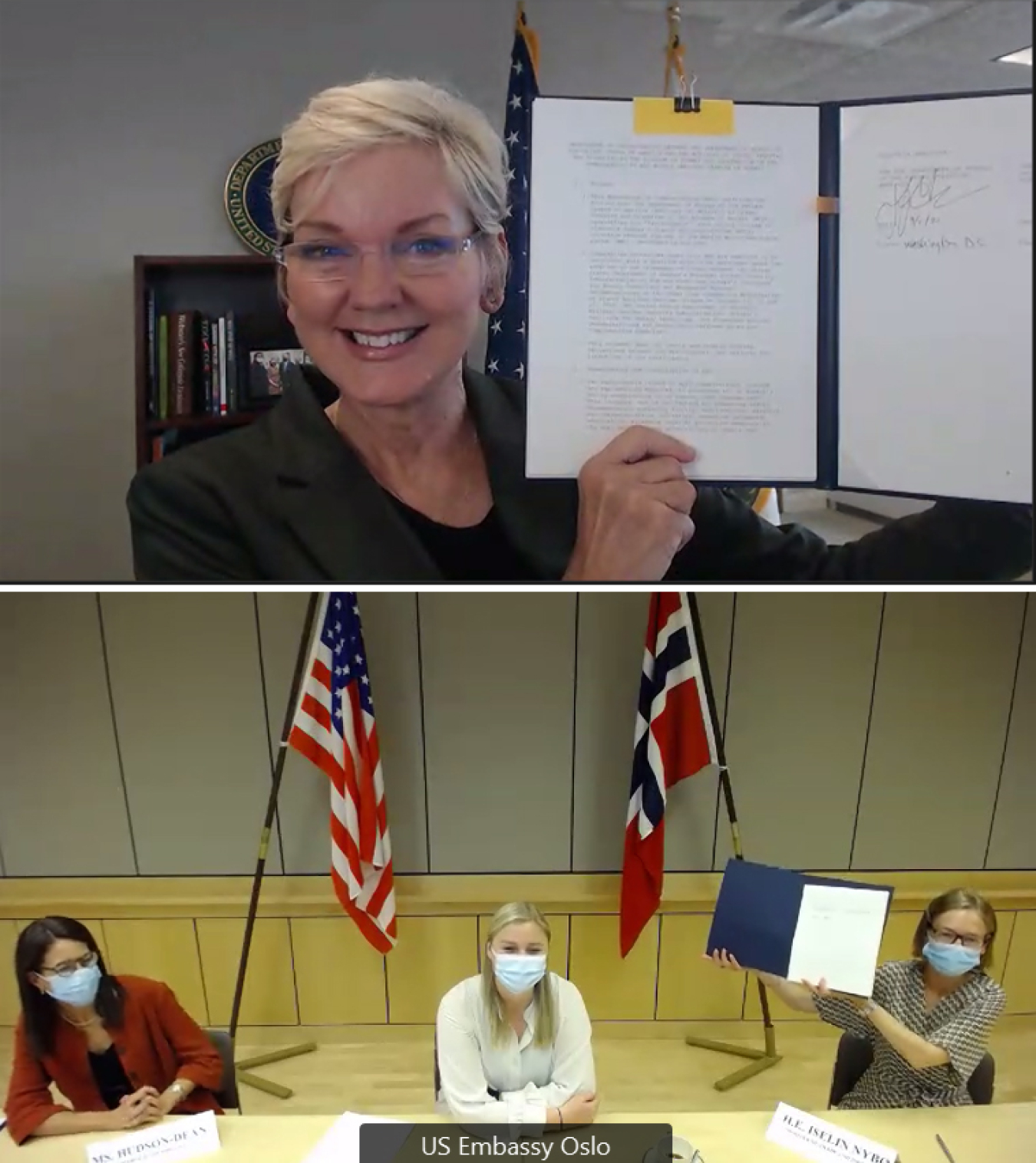DOE and Norway’s Ministry of Trade, Industry, and Fisheries today signed a memorandum of understanding to advance a project to eliminate all of Norway’s highly enriched uranium by downblending it to low-enriched uranium – a shared nonproliferation goal.
National Nuclear Security Administration
September 1, 2021
WASHINGTON – The U.S. Department of Energy and Norway’s Ministry of Trade, Industry, and Fisheries today signed a memorandum of understanding to advance a cooperative project to eliminate all of Norway’s highly enriched uranium (HEU) by downblending it to low-enriched uranium – a shared nonproliferation goal.
Together with our Norwegian friends and partners, we have taken a major challenge and come up with a creative, innovative solution that will make the world a safer place.
“This project is the latest example of the brilliant work of the Department of Energy’s engineers, scientists, and technical experts come to life,” said Secretary of Energy Jennifer M. Granholm. “Together with our Norwegian friends and partners, we have taken a major challenge and come up with a creative, innovative solution that will make the world a safer place.”
During downblending, HEU is thoroughly mixed with depleted or natural uranium to reduce the uranium-235 concentration below 20%. The resulting low-enriched uranium cannot be used to make an improvised nuclear device, achieving permanent threat reduction. The challenge has been that much of Norway’s remaining HEU is mixed with thorium, making other disposition techniques more challenging.
The memorandum of understanding, signed by Secretary Granholm and her Norwegian counterpart, Minister of Trade and Industry Iselin Nybø, calls for small-scale downblending activities to begin in 2022 using Norway’s existing infrastructure. It also paves the way for the eventual deployment of the Department’s Mobile Melt-Consolidate system, which will complete the job.
The Mobile Melt-Consolidate system is a flexible tool that can treat a wide variety of HEU-bearing materials safely and reliably, including those that are challenging to dispose of by more traditional means. Building on more than two decades of materials science, engineering, and research & development, the system will enable the treatment of HEU at partner facilities, eliminating the most vulnerable stage in the nuclear materials’ lifecycle – transit – and reducing the amount of material that is returned to the United States.
“I am very pleased to announce this agreement. It lays an important foundation for Norway to get rid of its nuclear weapons-usable material. We are thus delivering at home what Norway and the United States have worked towards globally for several years – reducing the use of HEU in the civilian sector. Technology developed in the United States is absolutely crucial for us to achieve this. Norway is a pilot country and I hope the technology can also be used by other countries,” said Minister of Trade and Industry Nybø.
Today’s event marks the next stage of a project that the United States and its Norwegian partners began in 2019, when the melt processing method was first discussed on the sidelines of a meeting in Norway. Since then, technical experts on both sides have worked to refine the project roadmap and prepare for work to begin.
When complete, Norway will become the 34th country, plus Taiwan, that is considered HEU-free, further underscoring Norway’s deep commitment to global HEU minimization.

